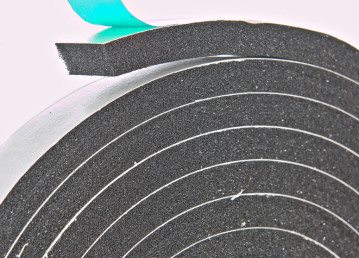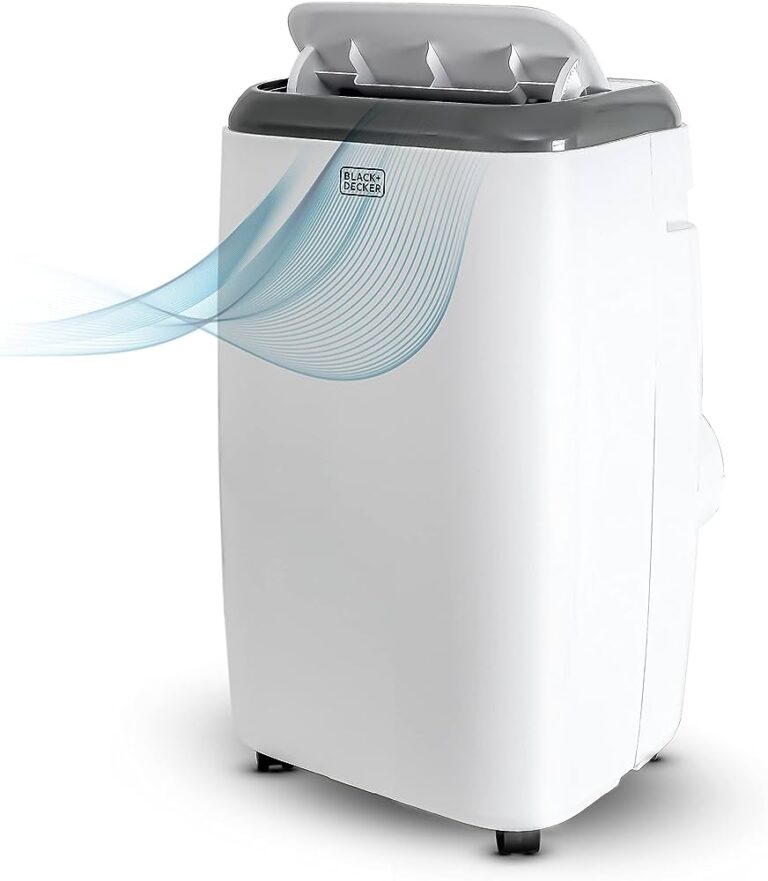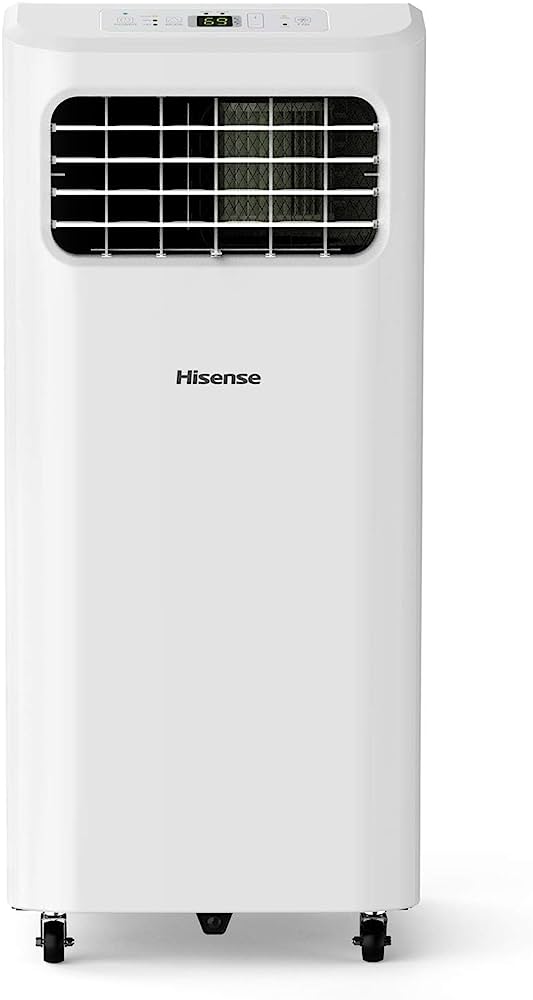How to Cover Sides of Window Air Conditioner: Easy Insulation Tricks
To cover the sides of a window air conditioner, apply weather stripping or foam insulation around the edges of the unit to create a tight seal and prevent drafts and insects from entering. You can also use caulk or a foam sealant to fill any gaps between the air conditioner and the window frame.
Additionally, insulation panels or side curtains can be installed to provide further insulation and coverage. By properly sealing the sides of the window air conditioner, you can improve its efficiency and maintain a comfortable indoor temperature.

Credit: www.frostking.com
Why Insulate The Sides Of Your Window Air Conditioner
Insulating the sides of your window air conditioner is important to prevent drafts and maintain energy efficiency. It helps to keep the cool air inside and the hot air outside, saving you money on your energy bills.
Benefits Of Insulating The Sides Of Your Window Air Conditioner
Insulating the sides of your window air conditioner can provide several benefits. These include:
- Energy efficiency and cost savings: Insulating the sides of your window air conditioner helps prevent air leaks, improving energy efficiency and reducing cooling costs. When the sides are properly sealed, cold air stays inside and hot air from outside is kept out, allowing your air conditioner to work more efficiently.
- Noise reduction: Insulating the sides of your window air conditioner can help reduce noise from the outdoor unit. The insulation helps block sound vibrations, creating a quieter and more peaceful indoor environment.
- Increased comfort: Insulating the sides of your window air conditioner helps maintain a consistent indoor temperature. It prevents drafts and air leaks, ensuring that hot or cold air doesn’t escape or enter your room through gaps around the unit. This insulation creates a more comfortable living space by keeping the indoor temperature stable.
By insulating the sides of your window air conditioner, you can experience energy savings, reduced noise, and improved comfort. It’s a simple and effective way to optimize the performance of your air conditioner and enhance your overall indoor experience.
Choosing The Right Materials For Insulation
When it comes to covering the sides of a window air conditioner, choosing the right materials for insulation is crucial. Properly insulating the sides can help prevent drafts and improve energy efficiency. Apply weather stripping or use foam insulation panels to create a tight seal and ensure optimal performance.
Considerations For Selecting The Right Materials:
- Foam insulation panels:
- Foam insulation panels are a popular choice for insulating the sides of a window air conditioner.
- These panels are made from lightweight foam material that provides excellent insulation properties to keep your room cool in the summer and warm in the winter.
- They are easy to install and can be cut to fit the specific dimensions of your air conditioner.
- Foam insulation panels also help to reduce noise from outside.
- Insulated covers and curtains:
- Insulated covers and curtains are another option for covering the sides of your window air conditioner.
- These covers are typically made from thick, weather-resistant fabric that provides insulation and protection against the elements.
- They are available in various sizes to fit different air conditioner models, and some can be customized to your specific measurements.
- Insulated covers help to prevent drafts and keep the cold air inside during the summer and the warm air inside during the winter.
- Weatherstripping:
- Weatherstripping is an essential component for insulating the sides of your window air conditioner.
- It is used to seal any gaps or openings between the air conditioner and the window frame.
- Weatherstripping materials such as foam tape or adhesive strips can be easily applied to the edges of the air conditioner to create a tight seal.
- This helps to prevent air leakage and improve energy efficiency by reducing the amount of conditioned air escaping outside.
By considering these different options for insulation materials, you can effectively cover the sides of your window air conditioner and improve its efficiency. Whether you choose foam insulation panels, insulated covers, or weatherstripping, each option provides its own benefits and can help to keep your room comfortable throughout the year.
Step-By-Step Guide To Insulating The Sides Of Your Window Air Conditioner
Learn how to cover the sides of your window air conditioner with our step-by-step guide. Avoid drafts and improve energy efficiency with these simple insulation techniques.
Insulating the sides of your window air conditioner is an essential step in ensuring maximum efficiency and preventing the loss of cool air. By properly insulating your unit, you can reduce noise, increase energy efficiency, and create a more comfortable living environment.
Here’s a step-by-step guide to help you insulate the sides of your window air conditioner:
Preparing The Window And Air Conditioner:
- Start by removing any dirt, dust, or debris from the window frame and the air conditioner unit.
- Make sure the window is completely closed and locked to provide a tight seal.
- Measure the width and height of the window opening to determine the size of the insulation materials you will need.
- Clean the sides of the air conditioner unit to ensure proper adhesion of the insulation.
Measuring And Cutting The Insulation Materials:
- Measure the length and width of the sides of your air conditioner unit.
- Use these measurements to cut foam insulation panels to the appropriate size.
- Ensure that the insulation panels fit snugly against the sides of the unit without blocking any vents or controls.
Installing Foam Insulation Panels:
- Place the foam insulation panels on the sides of the air conditioner unit.
- Press the panels firmly against the unit, ensuring that they cover the entire side surface.
- Trim any excess foam with a utility knife for a neat and clean appearance.
Installing Insulated Covers Or Curtains:
- If desired, you can further enhance the insulation by installing insulated covers or curtains.
- These covers or curtains provide an additional layer of insulation and help to block out drafts.
Adding Weatherstripping For Extra Insulation:
- Apply weatherstripping tape along the edges of the foam insulation panels.
- This helps to create an airtight seal and prevents any gaps where cool air could escape.
Securing The Insulation In Place:
- To ensure that the insulation remains in place, use adhesive or double-sided tape to secure it to the sides of the air conditioner unit.
- Make sure to follow the manufacturer’s instructions for the specific adhesive or tape you are using.
- Check that the insulation is securely in place before operating the air conditioner.
Insulating the sides of your window air conditioner is a simple and effective way to improve its performance and increase energy efficiency. By following this step-by-step guide, you can create a more comfortable living environment while reducing your energy consumption.
Tips And Tricks For Effective Insulation
Discover effective tips and tricks for insulating your window air conditioner. Learn how to cover the sides of your AC unit to ensure maximum efficiency and prevent any gaps or drafts.
Whether you’re dealing with hot summers or chilly winters, effective insulation around your window air conditioner can make a significant difference in maintaining a comfortable indoor environment. In this section, we’ll share some tips and tricks for insulating the sides of your window air conditioner to maximize energy efficiency and reduce drafts.
Here’s what you need to know:
Sealing Gaps And Cracks Around The Air Conditioner:
- Apply weatherstripping: Use weatherstripping tape to seal any gaps or cracks between the unit and the window frame. This will prevent warm or cold air from leaking in or out, improving the overall insulation of your window air conditioner.
- Caulk the edges: Apply caulk along the edges of the air conditioner where it meets the window frame. This will create a tight seal and prevent air leaks.
- Use foam insulation: For larger gaps or cracks, consider using foam insulation. It expands to fill the space, creating a tight barrier against air infiltration.
Using Adhesive Strips For Added Security:
- Attach adhesive strips: To provide extra security and insulation, attach adhesive strips to the sides of your window air conditioner. These strips will create a barrier between the unit and the window frame, reducing drafts and improving energy efficiency.
- Choose high-quality strips: When selecting adhesive strips, opt for high-quality materials that are durable and weather-resistant. This will ensure that your insulation remains effective over time.
Proper Maintenance To Preserve Insulation Effectiveness:
- Clean and inspect regularly: Regularly clean your window air conditioner and inspect it for any signs of damage. Keep the unit free from dirt, dust, and debris, as they can affect the insulation and overall performance.
- Replace worn weatherstripping: Over time, weatherstripping may become worn or damaged. Keep an eye out for any signs of deterioration and replace it when necessary to maintain effective insulation.
- Check for gaps or cracks: Periodically check for any new gaps or cracks around the air conditioner. Repair them promptly to prevent air leaks and maintain optimal insulation.
Removing And Storing Insulation During The Off-Season:
- Remove insulation before storage: When the cooling or heating season is over, remove any insulation covering the sides of your window air conditioner. Properly store it in a clean and dry area, ready for use when needed again.
- Clean the unit before storage: Before storing the window air conditioner, make sure to clean it thoroughly. Remove any dirt, dust, or debris that may have accumulated during its use.
- Inspect insulation for damage: Before storing the insulation, inspect it for any signs of damage or wear. If necessary, replace damaged insulation to ensure effective insulation next season.
By following these tips and tricks for effective insulation, you can enhance the energy efficiency of your window air conditioner and create a more comfortable indoor environment. Take the time to seal gaps and cracks, use adhesive strips for added security, maintain the insulation properly, and store it appropriately during the off-season.
This way, you can make the most out of your window air conditioner and enjoy its benefits all year round.
Frequently Asked Questions On How To Cover Sides Of Window Air Conditioner
How Do You Cover Gaps Around A Window Air Conditioner?
To cover gaps around a window air conditioner, apply weather stripping or caulk along the edges of the unit to create a tight seal and keep out insects. Avoid covering the outside of the air conditioner during operation.
How Do You Seal The Sides Of A Window Air Conditioner?
To seal the sides of a window air conditioner, apply a continuous bead of caulk around the unit. Smooth the caulk with a damp rag or your finger for a tight seal. Weather stripping and foam sealant can also be used to fill any gaps between the air conditioner and window frame.
Avoid covering the outside of the unit during operation.
What Can I Put Around My Window Air Conditioner?
To cover your window air conditioner, you can use weather stripping, caulk, or foam sealant to fill any gaps between the unit and the window frame. This will create a barrier to keep out insects and improve energy efficiency.
Can You Cover The Outside Of A Window Air Conditioner?
No, it is not recommended to cover the outside of a window air conditioner while it is in use.
Conclusion
Covering the sides of your window air conditioner is essential for energy efficiency and preventing drafts. By following the steps outlined in this blog post, you can effectively seal any gaps and insulate the sides of your unit. Using caulk or foam sealant, weather stripping, or specially designed insulation panels can provide a tight seal and keep insects out.
Additionally, covering the outside of your window air conditioner is not recommended during the summer, as it can hinder proper ventilation. However, during the winter months, using an indoor air conditioner cover can prevent cold drafts from entering your home.
By taking these simple steps, you can improve the performance of your window air conditioner and save on energy costs. Don’t let drafts or gaps diminish the effectiveness of your unit – take action today to cover the sides of your window air conditioner and enjoy a more comfortable environment.






